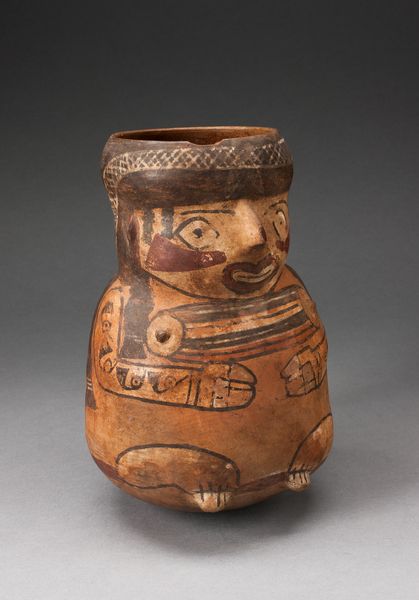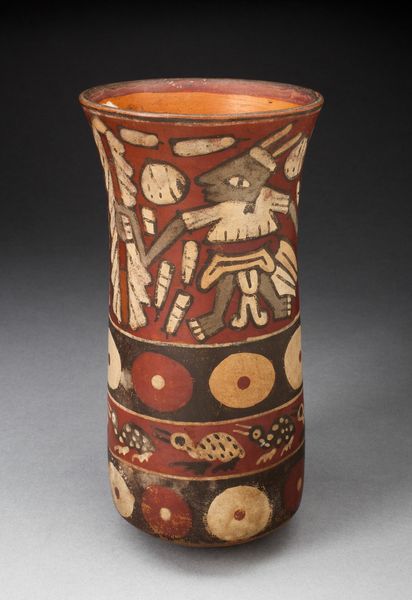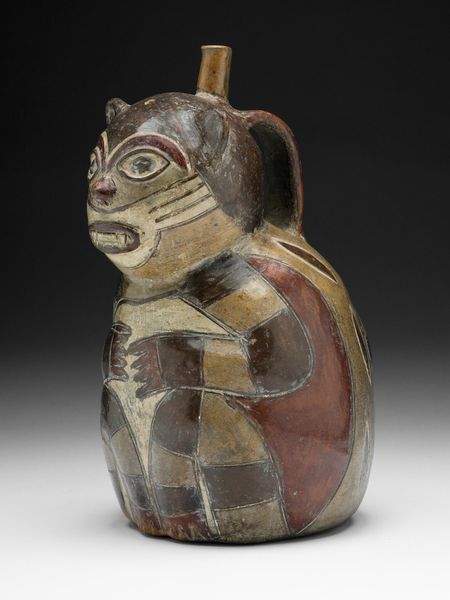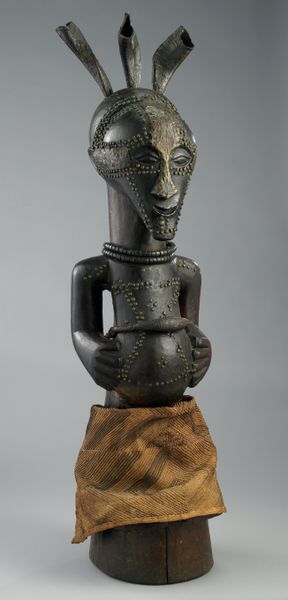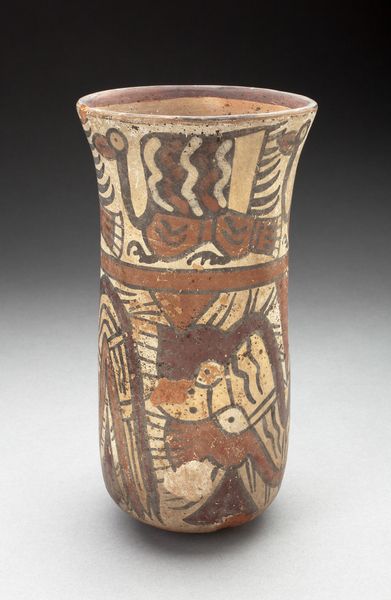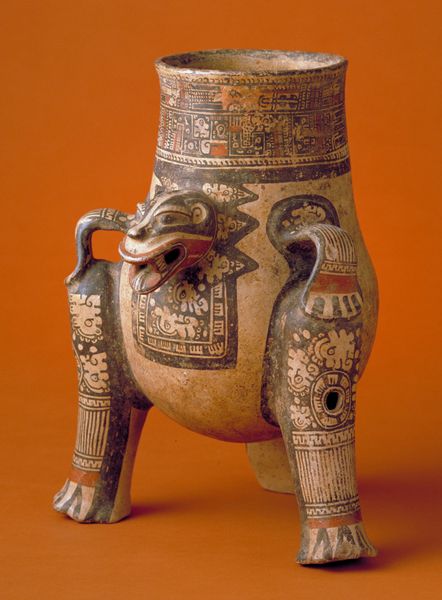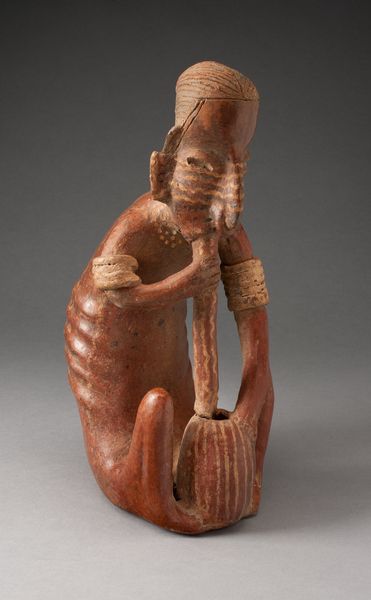
carving, sculpture, wood
#
carving
#
sculpture
#
sculpture
#
wood
Dimensions: 53 1/2 x 26 1/2 x 24 in. (135.89 x 67.31 x 60.96 cm)
Copyright: Public Domain
Curator: This extraordinary piece is a Drum, created by the Baga people around the early 20th century. It’s currently held in the collection of the Minneapolis Institute of Art. Editor: The striking dark drum balances atop the horse...It appears aged, well-used and earthy; it demands immediate attention. You see the craft immediately. Curator: Indeed. What captures my attention is the role of the artist in shaping communal identity through an object designed for sound and visual symbolism. How do you view the craftsmanship impacting its original function? Editor: Absolutely. We're talking about selecting, treating, and shaping the wood. You feel the weight, envision the hand tools used for the carving. The labor invested is evident, not only shaping the material but the social structure that supported that kind of production. It transcends mere "folk art"—it's a testament to material engagement in cultural practice. Curator: Interesting take. Its original functionality, and its social role, cannot be understated. The drum was used in social and ceremonial contexts. It gives powerful testimony as to how performances might happen around it, not only during but also preceding the actual performative act. This embodies identity for a group. Editor: I agree. Even without hearing its sound, you immediately infer about the possible rituals surrounding the raw materials used, the selection, the labor and community effort in bringing these elements into dialogue in one art piece that must be engaged by touch, sound and sight! Curator: Consider its display in a contemporary museum setting like Mia. How does this influence, or even distort, our understanding of its original purpose? Does exhibiting change the understanding, when compared to active involvement of an active performance, for which it was initially conceived? Editor: Display undeniably transforms reception. Context shifts how we engage with materials. The museum distances the drum from its lived context. I'm wondering then...what considerations went into choosing that specific type of wood... and does its patina reflect particular rituals, or how its use shaped the appearance we perceive today? Curator: A fundamental, and excellent, point. So the object, extracted and exhibited within our Museum context makes me ask: how do we reinstate and reactivate the intended social function and original agency through exhibition interpretation and design? Editor: Food for thought! It's a reminder to always look at the processes of creation when looking at cultural expression... Curator: …And of stewardship, which invites a closer, and thoughtful examination of history itself.
Comments
minneapolisinstituteofart almost 2 years ago
⋮
Carved from a single piece of wood, its massive body supported by an elegant horse, this large drum was closely associated with male identity and authority. Played by men of high ritual standing, it resounded during male initiation ceremonies and the celebration of male ancestors. The horse wears a double necklace with what appear to be Islamic amulets, a possible reference to contact with Muslim traders, who introduced horses to this West African region.
Join the conversation
Join millions of artists and users on Artera today and experience the ultimate creative platform.


